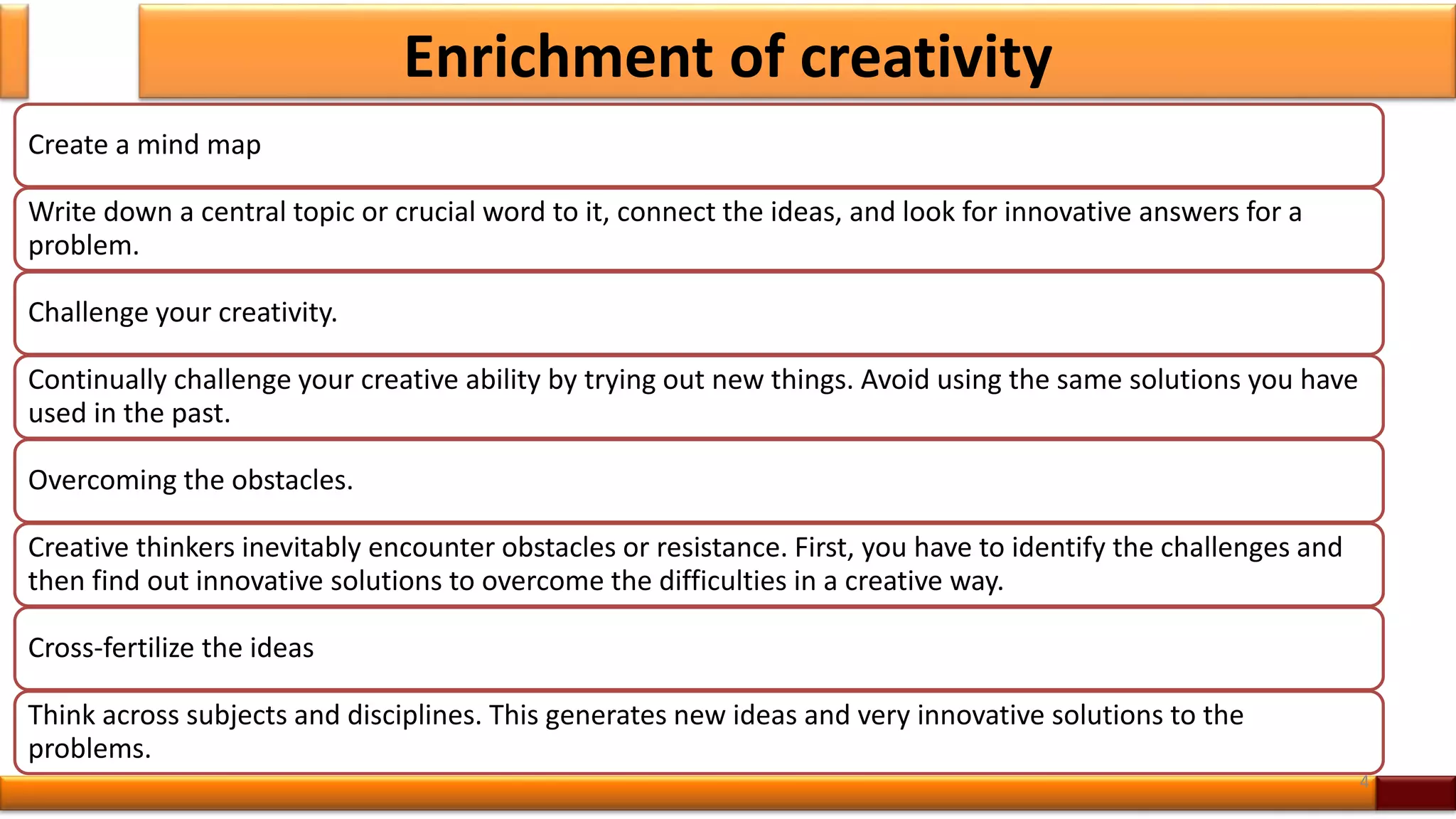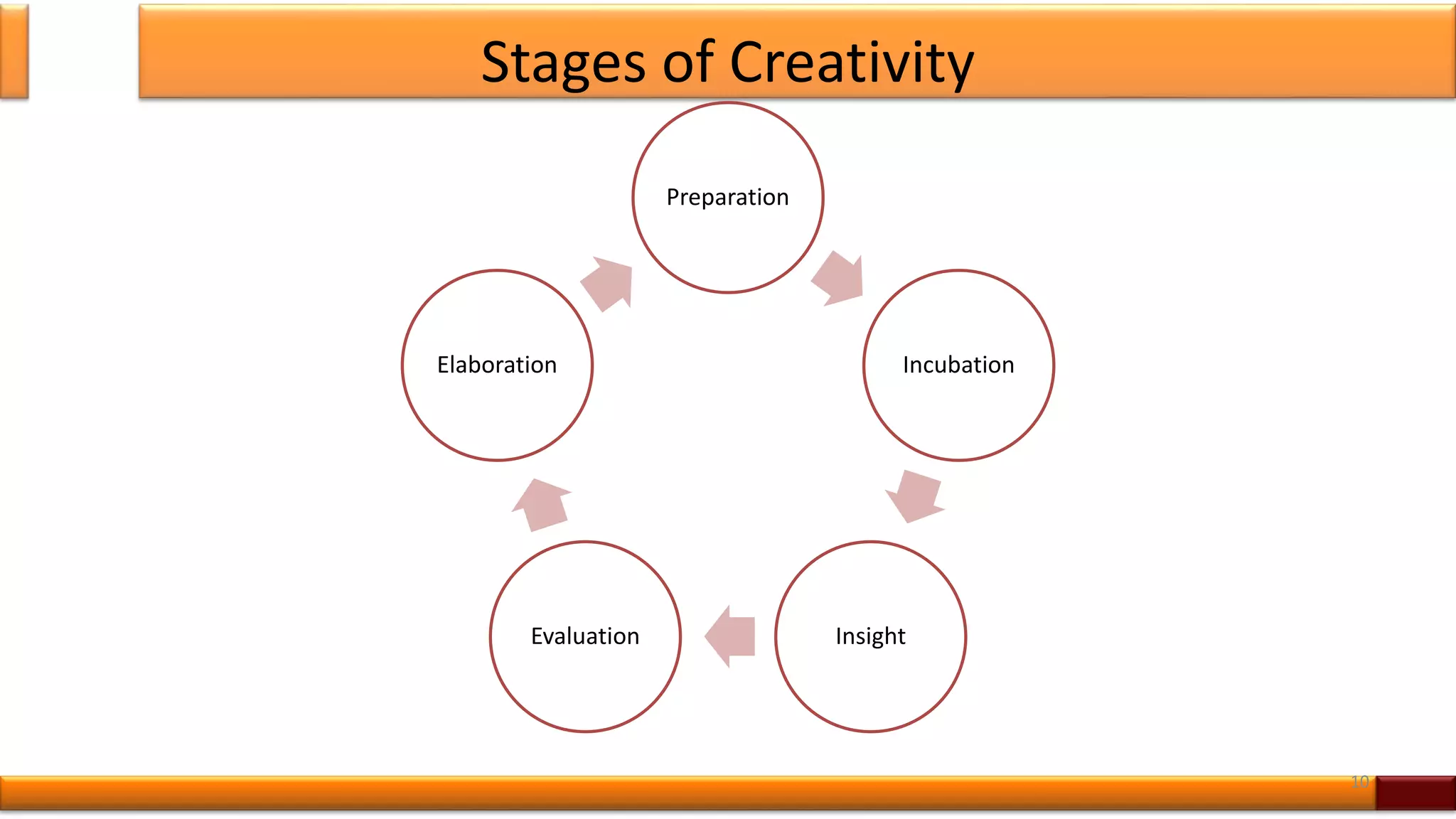The document discusses the definition and importance of creativity, highlighting its relevance beyond artists to everyone's problem-solving skills. It outlines methods for enhancing creativity, such as brainstorming, mind mapping, and collaborating with others, as well as the stages of the creative process—from preparation to elaboration. Additionally, it emphasizes that creativity can be developed through practice, exploration, and reflection.
















